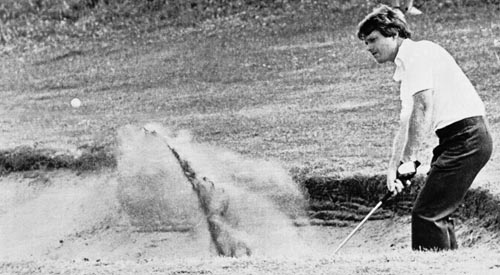
Turnberry Resort’s Ailsa Course: History revisited
For the fourth time in history, the grounds that once served as the holding for the Lords of Galloway during the Middle Ages, will play backdrop to golf’s most historic tournament as Turnberry Resort’s Ailsa Course hosts the 138th Open Championship this week.
Turnberry Resort’s Ailsa Course first hosted the Open Championship in 1977 with then-Masters champion Tom Watson and then-14-time major championship-winner Jack Nicklaus squaring off in what would go on to be dubbed the Duel in the Sun.
With three holes left to play, Watson stepped away from his ball on the 16th tee, and said to Nicklaus, “This is what it’s all about, isn’t it?” Nicklaus smiled back, “You bet it is”. This followed an historic moment that saw Watson make a near impossible putt on the 15th hole, a 60-foot birdie to tie his opponent at 11-under-par.
Watson seized the lead on the par-five 17th hole referred to as Lang Whang. He hit a three iron that carried to the green, allowing himself to make a two-putt for birdie. Nicklaus settled for par after missing a three-foot putt which, in turn, set up a dramatic 72nd hole.
Watson striped his one iron down the centre of the 18th fairway forcing Nicklaus to take a more direct line to the hole. The Golden Bear sliced his shot right, finally stopping in the thick rough near a gorse bush that would interfere with his back swing. But this was Jack Nicklaus. He took a wild roundhouse swing with his eight iron, landing his ball 35-feet from the hole.
Watson also played the hole spectacularly well, landing a seven iron two feet from the hole, setting up a finish that would be remembered for years.
[php snippet=1]
Nicklaus, standing on the right front edge of the 18th green, drained the improbable which sent the rowdy Scottish crowd into a frenzy. Soon after, Watson lined up his putt with the crowd still cheering. The excited audience could ultimately be silenced by just one man: Nicklaus. The Golden Bear raised his arms bringing the gallery to an immediate hush, but they were silent only long enough for Watson to take his practice swings.
On cue, Watson put the ball squarely into the cup, sealing his third major title win and second Open Championship.
The sunburnt Scots were still cheering when Nicklaus placed his arm around Watson as the two walked to the scorer’s tent to sign their cards. That moment is one of the most memorable displays of sportsmanship ever.
Nine years later, the Great White Shark, Greg Norman would claim his first ever Major Championship on the fallen grounds of Turnberry Castle, winning the Open by five strokes over Gordon J. Brand.
In 1994, Nick Price and Jesper Parnavik entered the final round tied at eight-under-par. Price was one shot better then Parnavik on the final day, winning his only Open Championship crown.
But one battle had taken place long before any of these on the grounds of Turnberry Castle. Robert the Bruce, who would one day become Robert the First, King of Scotland, made an attempt to recover the castle from English control.
The campaign was partially successful because it ultimately led to the removal of English soldiers. Robert ordered the castle be destroyed in 1310, but the ruins of the original fortress still remain, just as every divot created on that memorable Sunday in July of 1977.
Another piece of history still remains: A lighthouse erected in 1873 to mark the spot where Turnberry Castle stood on the Atlantic coast of Scotland, acting as a beacon for the next generation of golfers to make history, as their heroes did before them.
[php snippet=1]

